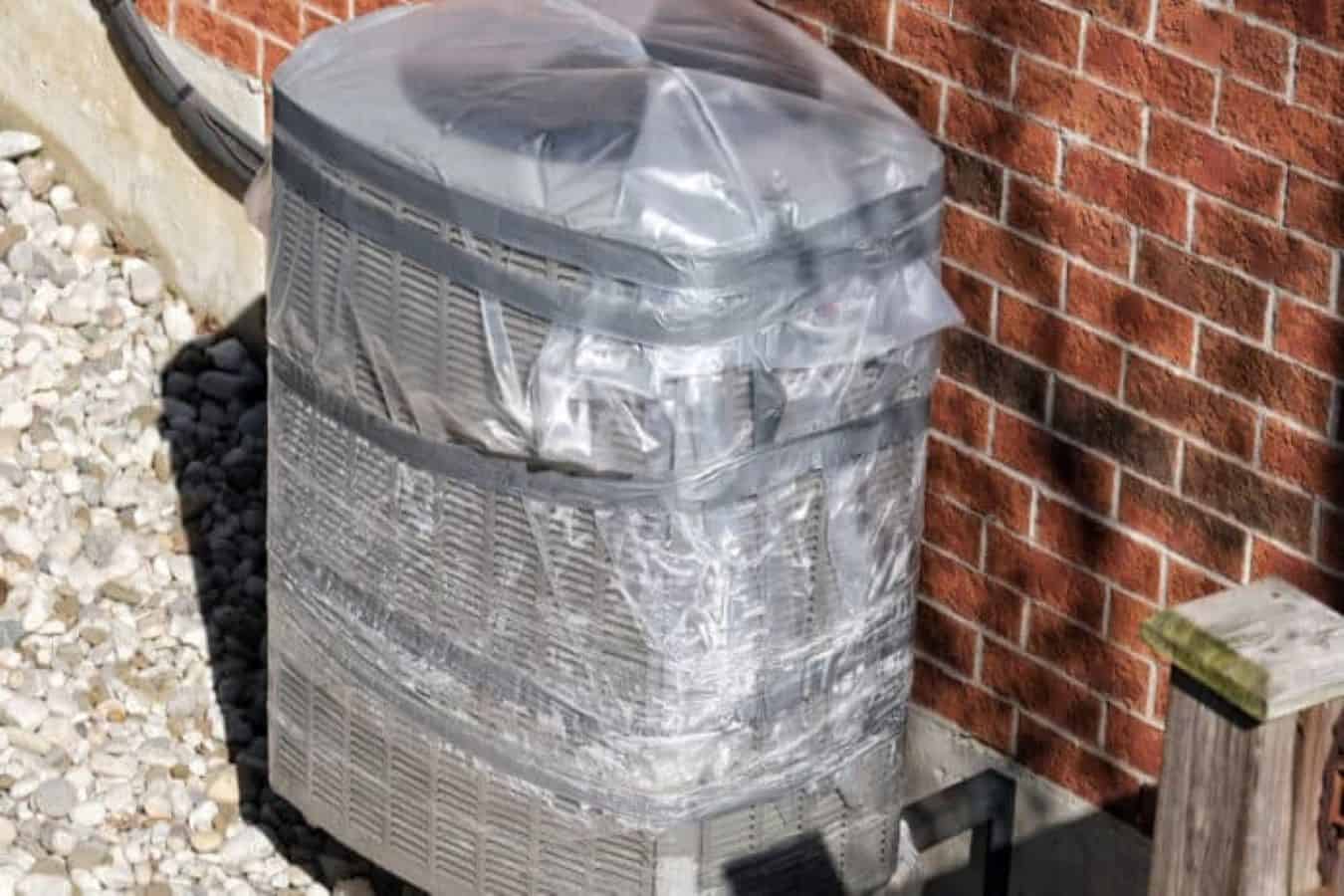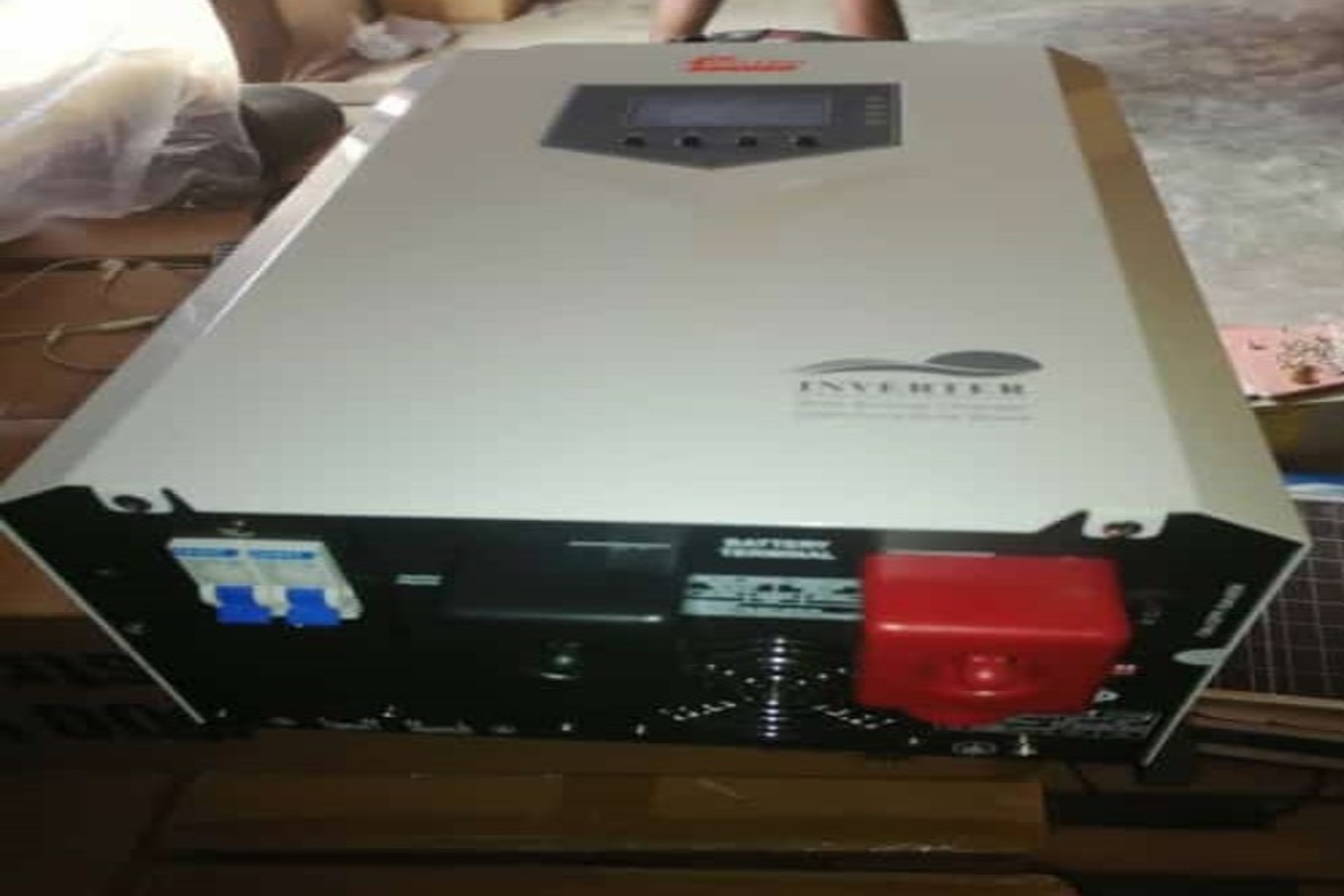Thermostats are a common feature in almost every home, but how does a thermostat work ?
We all know that thermostat help to regulate the temperature in our homes. However, there is so much more to thermostats than meets the eye.
In fact, thermostats are an essential component of our heating and cooling systems. Besides without them, our homes wouldn’t be nearly as comfortable.
In this PowerVersity post, we will delve into the science behind thermostats. Hence, exploring how they work and the different types of thermostats available on the market.
We’ll go over all you need to know about thermostats – from electromechanical to smart, and how they keep our homes comfortable.
How Does A Thermostat Work: Overview
Thermostats, though often overlooked, play a crucial role in our daily lives.
These unassuming devices quietly regulate the temperature in our homes, offices, and even our vehicles. Thus, creating a comfortable environment for us to thrive in.
But have you ever wondered how thermostats actually work? What is the science behind these seemingly magical devices?
To understand the importance of thermostats, we must first grasp the concept of temperature control.
Temperature, simply put, is a measure of the average kinetic energy of the particles in a substance.
When it comes to our comfort, maintaining the right temperature is key.
Thermostats act as our guardians. Hence, monitoring the temperature and making necessary adjustments to ensure our surroundings remain at our desired comfort level.
Whether it’s a chilly winter day or a scorching summer afternoon, thermostats work tirelessly to maintain the perfect balance.
But how do they achieve this? In essence, thermostats consist of a temperature sensor, a control unit, and a switching mechanism.
The temperature sensor detects the current temperature, relaying this information to the control unit.
The control unit then compares the actual temperature to the desired temperature set by the user.
If the actual temperature deviates from the desired temperature, the control unit activates the switching mechanism to either turn on or off the heating or cooling system accordingly.
This continuous monitoring and adjustment process ensures that the environment remains at the desired temperature, providing us with the comfort we seek.
Thermostats come in various forms, from simple manual ones to advanced programmable models.
Some even have smart capabilities, allowing us to control and monitor them remotely through our smartphones or other devices.
Regardless of the type, their purpose remains the same – to create a comfortable living or working space.
In this blog post, we will delve deeper into the fascinating world of thermostats, exploring the science behind their functioning and shedding light on the different types available.
By understanding how these devices work, we can appreciate their significance and make informed choices when it comes to selecting the right thermostat for our needs.
So, let’s embark on this enlightening journey to unravel the science behind thermostats and discover the inner workings of these indispensable devices that enhance our daily lives.
How Does A Thermostat Work: Components And Functions Of A Thermostat
To truly understand how thermostats work, it’s crucial to grasp the basic mechanics and the key components that make them function effectively.
A thermostat is a device that regulates temperature by controlling heating or cooling systems in a space.
It serves as the brain behind maintaining a comfortable environment.
At the heart of a thermostat is a temperature sensor, typically a bi-metallic strip or a thermistor.
This sensor detects the current temperature in the room or space and sends this information to the control unit of the thermostat.
The control unit, often consisting of a microprocessor, receives the temperature input and compares it to the desired temperature set by the user.
When the current temperature deviates from the desired temperature, the control unit initiates action through the output relay.
This relay is an electromechanical switch that regulates the heating or cooling system.
If the temperature is too low, the thermostat will signal the heating system to activate, while if the temperature is too high, it will trigger the cooling system to engage.
To ensure precise temperature control, thermostats often incorporate additional features such as hysteresis.
Hysteresis prevents the heating or cooling system from rapidly switching on and off as the temperature fluctuates near the desired setpoint.
By introducing a small temperature differential, the thermostat can avoid unnecessary cycling and achieve more stable temperature regulation.
Modern thermostats also frequently utilize programmable or smart capabilities.
These advanced features enable users to set temperature schedules for different times of the day or control their thermostat remotely through mobile applications.
This flexibility allows for energy savings by adjusting temperature settings when the space is unoccupied or optimizing comfort levels based on individual preferences.
In conclusion, the basic mechanics of a thermostat involve a temperature sensor, a control unit, and an output relay.
By continuously monitoring the temperature and activating the appropriate heating or cooling system, thermostats ensure a comfortable environment.
Incorporating additional features like hysteresis and programmability further enhance their effectiveness in maintaining desired temperature levels.
How Does A Thermostat Work: Differentiating Between Traditional And Programmable Thermostats
When it comes to thermostats, there are two main types that you will come across – traditional thermostats and programmable thermostats.
Understanding the differences between these two can help you make an informed decision when it comes to selecting the right thermostat for your home.
Traditional Thermostats
Traditional thermostats, also known as manual thermostats, are the more conventional option.
They typically consist of a simple dial or slider that allows you to manually adjust the temperature in your home.
While they may lack the advanced features of programmable thermostats, they are still effective in controlling the heating and cooling of your space.
With a traditional thermostat, you have full control over the temperature settings, but you’ll need to manually adjust it each time you want to make a change.
This can be a bit cumbersome and may result in energy wastage if you forget to adjust the temperature when you leave the house or go to sleep.
Programmable Thermostats
On the other hand, programmable thermostats offer a greater level of convenience and energy efficiency.
These thermostats come equipped with advanced scheduling capabilities, allowing you to program temperature changes based on your daily routine.
For example, you can set the thermostat to lower the temperature when you’re away during the day and raise it just before you return home.
This way, you can ensure optimal comfort while minimizing energy usage.
With programmable thermostats, you have the flexibility to create multiple temperature schedules throughout the day and week, matching your lifestyle and preferences.
Some advanced models even have Wi-Fi connectivity, enabling remote access and control through mobile apps or smart home systems.
This means you can adjust the temperature settings from anywhere, ensuring a comfortable environment whenever you arrive home.
In summary, traditional thermostats offer simplicity and affordability, while programmable thermostats provide enhanced convenience and energy savings.
Consider your lifestyle, routine, and energy-saving goals when deciding which type of thermostat is best suited for your needs.
Making the right choice can significantly impact your comfort levels and energy consumption, ultimately leading to a more efficient and pleasant living environment.
How Thermostats Accurately Measure Temperature
Thermostats play a crucial role in maintaining the desired temperature in our homes and offices.
But have you ever wondered how these devices accurately measure temperature?
Let’s delve into the fascinating world of thermostat sensors and techniques to uncover the science behind their accurate temperature measurements.
One of the most common sensors used in thermostats is the bimetallic strip.
This ingenious mechanism relies on the different expansion rates of two metals bonded together.
As temperature changes, the metals expand or contract at varying rates, causing the bimetallic strip to bend.
This bending movement is then converted into an electrical signal, which the thermostat interprets as a temperature reading.
This method allows for a simple yet effective temperature measurement.
Another widely used sensor is the thermistor, a type of resistor that changes its resistance with temperature.
Thermistors are made from materials whose resistance decreases as temperature rises (negative temperature coefficient) or increases as temperature rises (positive temperature coefficient).
By measuring the resistance, the thermostat can accurately determine the temperature. These sensors offer high precision and are commonly found in modern digital thermostats.
In addition to these sensors, some thermostats utilize infrared technology to measure temperature.
Infrared sensors detect the heat radiated by objects and convert it into an electrical signal. This allows the thermostat to measure the temperature of a room without direct contact with the air or objects within it.
Although less common in residential settings, infrared sensors are often used in industrial or commercial applications where non-contact temperature measurement is required.
Furthermore, advanced thermostats may employ additional techniques to enhance accuracy.
For instance, some models feature multiple sensors strategically placed throughout a room to account for temperature variations.
By averaging the readings from multiple sensors, these thermostats can provide more precise temperature control.
It’s important to note that the accuracy of thermostat measurements can also be affected by external factors such as drafts, direct sunlight, or proximity to heat sources.
Therefore, proper thermostat placement and calibration are essential to ensure accurate temperature readings.
In conclusion, thermostats employ a variety of sensors and techniques to measure temperature accurately.
From bimetallic strips to thermistors and infrared sensors, these ingenious devices utilize the principles of physics to provide us with optimal comfort control.
Understanding the science behind thermostat temperature measurement can help us make informed decisions when selecting and using these devices in our daily lives.
How To Program Thermostat Temperature
Understanding thermostat programming is key to optimizing energy efficiency and maintaining a comfortable living environment.
Thermostats allow you to set temperature schedules based on your daily routine, ensuring that your home is heated or cooled efficiently throughout the day.
To begin, familiarize yourself with the different programming options available on your thermostat.
Most thermostats offer a range of settings, including weekday and weekend schedules, as well as the ability to customize specific temperature settings for different times of the day.
Start by considering your daily routine. What time do you typically wake up? When do you leave for work?
Do you have a consistent schedule or do your activities vary from day to day? By answering these questions, you can begin to create a temperature schedule that aligns with your lifestyle.
During the colder months, it’s recommended to set your thermostat to a lower temperature while you’re away from home or asleep.
This reduces energy consumption and saves money on heating costs. However, it’s important to find a balance between energy efficiency and comfort.
You don’t want to come home to a freezing house or wake up shivering in the morning.
In contrast, during the warmer months, consider setting your thermostat to a higher temperature when you’re away or asleep.
This helps to minimize energy usage from air conditioning units, while still maintaining a comfortable indoor environment.
Take advantage of the thermostat’s programming features to create a schedule that reflects your daily routine.
For example, you can set the temperature to be cooler in the evenings when you typically relax at home, and warmer in the mornings when you’re getting ready for the day.
Additionally, some thermostats offer advanced features such as learning capabilities or the ability to adjust temperature settings remotely through smartphone apps.
These features can further enhance energy efficiency and convenience.
Remember to regularly review and adjust your thermostat settings as needed.
As seasons change and your routine evolves, it’s important to ensure that your temperature schedules are still aligned with your preferences and energy-saving goals.
By understanding thermostat programming and optimizing temperature schedules, you can maximize energy efficiency, reduce utility bills, and create a comfortable living environment in your home.
The Impact Of Thermostats On Energy Consumption
Thermostats play a crucial role in our daily lives, not only providing comfort but also contributing to energy savings and environmental sustainability.
Understanding the impact of thermostats on energy consumption can empower us to make informed choices and take action towards a greener future.
Modern thermostats utilize advanced technology and algorithms to regulate temperature effectively.
By setting desired temperature ranges, these devices can automatically adjust heating or cooling systems to maintain a comfortable environment.
This intelligent control helps optimize energy usage by avoiding unnecessary heating or cooling.
One of the key features of smart thermostats is their ability to learn and adapt to our lifestyle patterns.
Through machine learning algorithms, these devices can analyze our temperature preferences and daily routines to create personalized schedules.
By automatically adjusting temperature settings based on our presence or absence, smart thermostats reduce energy waste when heating or cooling spaces that are unoccupied.
Another important aspect of thermostats is their ability to monitor and display energy consumption data.
Many modern thermostats come equipped with energy usage reports and real-time feedback, allowing users to track their energy usage patterns.
This information empowers us to make conscious decisions about our energy consumption and identify opportunities for improvement.
Furthermore, thermostats can be integrated with other smart home devices, such as occupancy sensors and weather forecasting systems.
By considering factors like occupancy, outdoor temperature, and humidity levels, these integrated systems can further optimize energy efficiency.
For example, a thermostat connected to occupancy sensors can detect when a room is empty and adjust the temperature accordingly, saving energy without compromising comfort.
The cumulative impact of these energy-saving features is substantial.
Studies have shown that households using programmable thermostats can save up to 10% on heating and cooling costs.
With the increasing popularity of smart thermostats, the potential for energy savings and environmental benefits becomes even greater.
By using thermostats wisely, we can reduce our carbon footprint and contribute to a more sustainable future.
Whether it’s adjusting temperature settings, leveraging advanced features, or simply being mindful of energy consumption, every action counts.
Let’s harness the power of thermostats to create a greener and more efficient world for generations to come.
How To Troubleshoot Common Thermostat Issues
Like any other electronic device, thermostat can encounter issues from time to time.
In this section, we will explore some common thermostat problems and provide you with valuable tips for troubleshooting and resolving them.
1. Incorrect Temperature Readings
If you find that your thermostat is displaying inaccurate temperature readings, it can lead to discomfort and energy inefficiency.
Start by verifying the thermostat’s placement. Ensure that it is not exposed to direct sunlight, drafts, or heat sources that can affect temperature accuracy.
Additionally, check if the thermostat is clean and free from dust or debris, as this can interfere with its sensors.
If the issue persists, recalibrate or replace the thermostat as necessary.
2. Unresponsive Or Non-Functioning Thermostat
If your thermostat is not responding to your inputs or appears completely non-functional, there are a few steps you can take.
First, check if the thermostat has power. Ensure that it is securely connected to its power source, whether it’s batteries or a wired connection.
If using batteries, replace them with fresh ones. If the thermostat is linked to the electrical system of your house, make sure the circuit breaker hasn’t tripped.
If these measures do not resolve the issue, it may be necessary to replace the thermostat.
3. Short Cycling
Short cycling refers to a situation where the HVAC system turns on and off frequently, leading to energy wastage and potential strain on the equipment.
The thermostat could be the culprit behind this issue. Check if the thermostat’s temperature differential setting is correctly configured.
This setting determines the temperature range at which the system should turn on and off.
Adjusting this setting to a wider range may help resolve short-circuit problems.
However, if the issue persists, it could indicate a more significant problem with the HVAC system itself, and it may be necessary to consult a professional technician.
4. Connectivity Issues With Smart Thermostats
Smart thermostats offer advanced features and remote control capabilities, but connectivity problems can arise.
Ensure that your smart thermostat is connected to a stable Wi-Fi network.
Check for any software updates for the thermostat and your smartphone app to ensure compatibility.
Restarting the device and re-establishing the connection can often resolve connectivity issues.
If problems persist, consult the manufacturer’s troubleshooting guide or reach out to their customer support for further assistance.
By following these troubleshooting tips, you can diagnose and resolve common thermostat issues.
Hence, it helps you maintain a comfortable and energy-efficient indoor environment.
However, if you encounter complex or persistent problems, it is always recommended to seek professional assistance to ensure the proper functioning of your thermostat and HVAC system.
How Does A Thermostat Work: Final Thought
In conclusion, thermostats also help save energy and maintain a sustainable environment.
Understanding how these devices function allows us to recognize their importance and make educated decisions when it comes to choosing the best thermostat for our requirements.
Remember that by using thermostats intelligently, we can lower our carbon footprint and help to create a more sustainable future.
I hope you found this tech explanation helpful.
Kindly share your thoughts with us by filling out the “Leave A Reply” form at the end of this page.
Further Reading And References
Explain that Stuff: Thermostats
Explain that Stuff: How Thermostats Work







